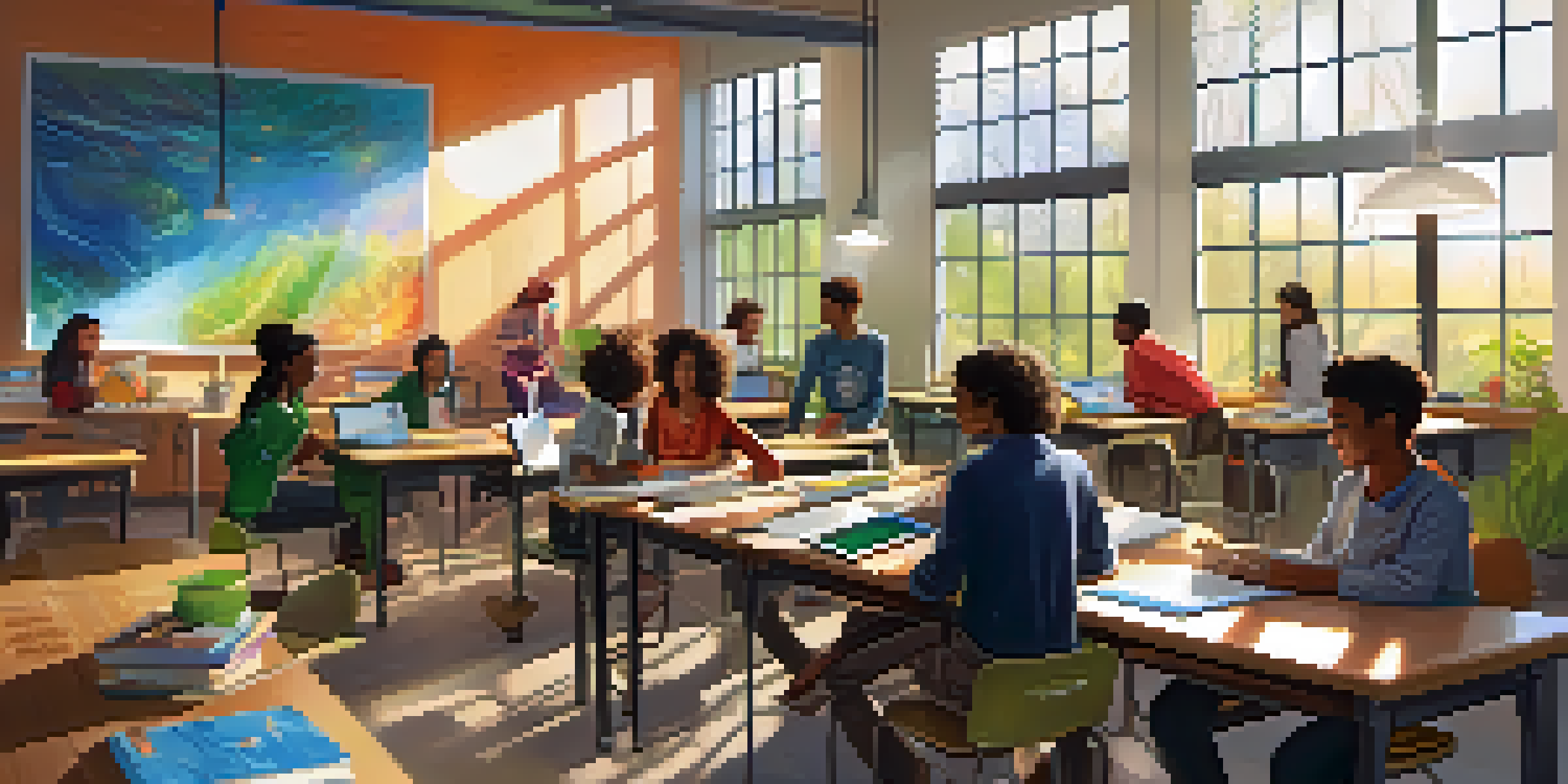Fostering Critical Thinking Through Interdisciplinary Projects

Understanding Critical Thinking and Its Importance
Critical thinking is the ability to analyze facts, evaluate evidence, and form judgments. It’s essential in both academic settings and everyday life, helping individuals make informed decisions. In a world overflowing with information, honing this skill can empower students to navigate complexities with confidence.
Critical thinking is the key to creative problem solving and decision making in our complex world.
For instance, when students learn to question assumptions and evaluate arguments, they become more adept at identifying biases and misinformation. This not only benefits their academic performance but also nurtures responsible citizenship. Therefore, fostering critical thinking should be a priority in education.
Moreover, critical thinking is not just an isolated skill; it often requires knowledge from various disciplines. This interconnectedness sets the stage for the value of interdisciplinary projects, which can effectively cultivate these essential skills.
What Are Interdisciplinary Projects?
Interdisciplinary projects combine concepts and methods from different disciplines to address complex problems. They encourage collaboration among students from various fields, integrating knowledge in a way that mirrors real-world scenarios. For example, a project on climate change might involve science, economics, and public policy, allowing students to explore the issue from multiple perspectives.

These projects provide a platform for students to see the connections between subjects, enhancing their understanding of how different fields influence one another. By working together, students learn to appreciate diverse viewpoints and develop a more holistic approach to problem-solving. This not only enriches their learning experience but also prepares them for future challenges.
Critical Thinking Enhances Learning
Critical thinking empowers students to analyze information and make informed decisions, benefiting both their academics and citizenship.
In essence, interdisciplinary projects serve as a bridge that connects the dots between various areas of study, fostering a more comprehensive educational experience.
Benefits of Interdisciplinary Projects for Critical Thinking
One of the primary benefits of interdisciplinary projects is that they naturally encourage critical thinking. When students tackle complex issues, they must evaluate information, analyze different viewpoints, and synthesize their findings. This process requires them to think critically about the problem at hand and engage deeply with the material.
Interdisciplinary collaboration is not just a trend; it’s the way forward in addressing the complex issues of our time.
For example, in a project examining renewable energy solutions, students might analyze scientific data, economic models, and social implications. This multifaceted approach not only deepens their understanding but also sharpens their analytical skills. Engaging with diverse perspectives helps them formulate well-rounded arguments and solutions.
Ultimately, the collaborative nature of these projects fosters an environment where critical thinking can flourish, equipping students with the skills they need to succeed in an increasingly interconnected world.
Engaging Students in Collaborative Learning
Collaboration is a cornerstone of interdisciplinary projects, allowing students to engage with one another in meaningful ways. Working together on shared goals fosters teamwork and communication skills, both of which are essential for critical thinking. When students discuss ideas and challenge each other’s viewpoints, they learn to articulate their thoughts more clearly.
Consider a scenario where students from different majors come together to tackle a community issue. Through dialogue and collaboration, they can explore innovative solutions that they might not have considered individually. This exchange of ideas cultivates an environment where critical thinking thrives, as students learn to evaluate and integrate diverse perspectives.
Interdisciplinary Projects Foster Skills
By combining knowledge from various fields, interdisciplinary projects promote collaboration and enhance critical thinking among students.
Moreover, this collaborative approach not only enhances their understanding of the subject matter but also builds a sense of belonging and community among peers. This supportive environment can significantly boost students' confidence in their critical thinking abilities.
Real-World Applications of Interdisciplinary Projects
Interdisciplinary projects often mirror real-world challenges, making them highly relevant and engaging for students. By addressing issues that exist beyond the classroom, students can see the practical applications of their learning. This relevance sparks a deeper interest in the subject matter and encourages them to think critically about solutions.
For instance, a project focused on urban development might require students to consider environmental science, sociology, and economics. By applying their knowledge to real-world scenarios, students gain insights into how different disciplines intersect and influence each other. This hands-on experience reinforces their critical thinking skills and highlights the importance of collaboration.
Ultimately, these real-world applications help students understand the significance of critical thinking in addressing global challenges, making their education more meaningful.
Challenges of Implementing Interdisciplinary Projects
While interdisciplinary projects offer numerous benefits, they do come with challenges. Coordinating schedules, aligning curricula, and ensuring effective communication among educators from different disciplines can be daunting. This complexity can sometimes hinder the successful implementation of such projects.
Additionally, students may initially struggle with the ambiguity of interdisciplinary work, as it often lacks clear boundaries. They might find it challenging to integrate knowledge from various fields and may need guidance to navigate these waters. Educators play a crucial role in providing that support and encouragement.
Real-World Relevance Boosts Engagement
Interdisciplinary projects address real-world issues, making learning more relevant and encouraging students to apply critical thinking in practical contexts.
Despite these challenges, the rewards of interdisciplinary projects far outweigh the difficulties. With careful planning and collaboration among educators, it’s possible to create a rich learning environment that promotes critical thinking.
Strategies for Effective Interdisciplinary Project Design
To maximize the benefits of interdisciplinary projects, educators can implement several effective strategies. First, clearly defining the project goals and objectives helps students understand the desired outcomes. This clarity guides their research and collaboration, ensuring a focused approach to critical thinking.
In addition, providing students with structured frameworks for collaboration can enhance their learning experience. Tools such as project planning templates or collaborative platforms encourage teamwork and keep everyone on the same page. This organized approach fosters a supportive environment where critical thinking can thrive.

Lastly, incorporating reflective practices throughout the project allows students to evaluate their learning processes. By encouraging them to think critically about their experiences, educators can further enhance their analytical skills and deepen their understanding of interdisciplinary connections.